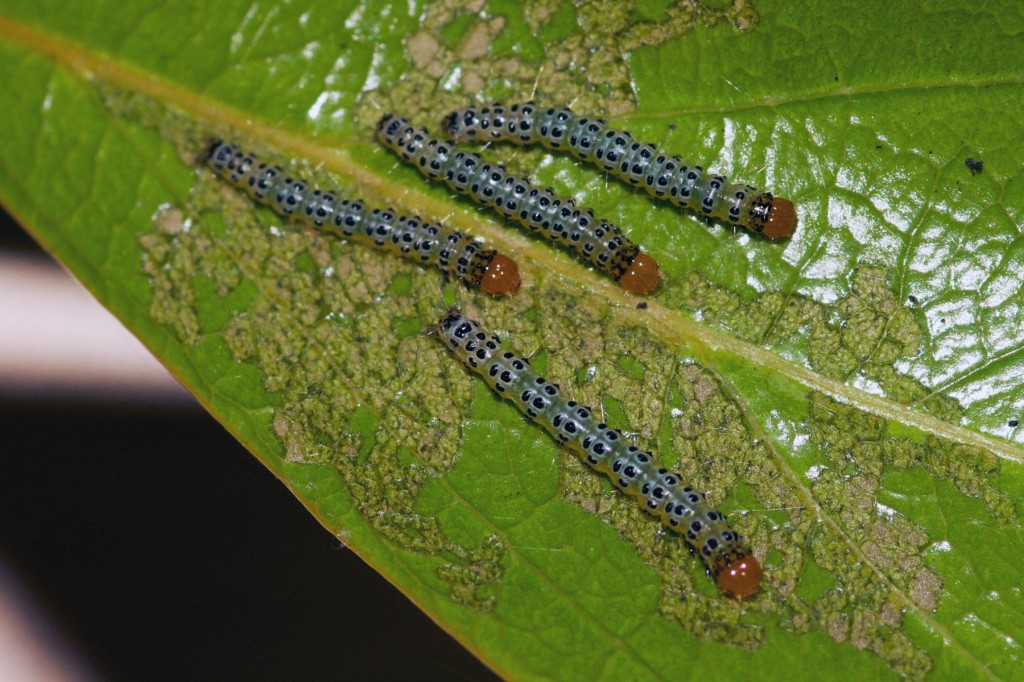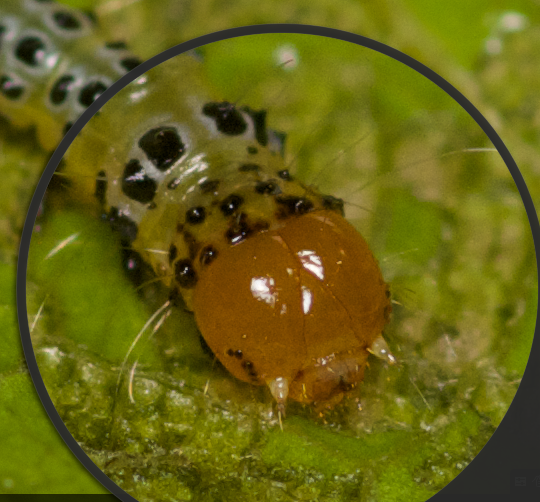Last weekend I went out to Yamato Scrub for another volunteer clean-up event coordinated by Palm Beach County ERM. We were removing the last of the temporary irrigation installed years and years ago to jump-start the native plants that they imported to the site to replace the acres and acres of Brazilian Pepper and Australian Pine that had grown up over the years since the site was drained by the canals that run all over the place down here.
The irrigation was the typical black poly tubing with smaller tubes for the emitters. But the contractors who installed the tubing made sure that the emitters didn’t wander off by tying them around the trunks of all the plants. And over time, those trunks got larger and even started growing right over the tubing, making it quite difficult to remove. What’s more, the combination of small amounts of water (this is drip irrigation, after all) and delicious leaf litter and mulch, proves irresistible to that imported scourge, Solenopsis invicta: the red imported fire ant.
As anyone who’s had the “opportunity” to deal with fire ants knows, they bite. And then they spray acid into the bite. And it hurts. A lot. The Smithsonian Marine Station in Fort Pierce has perhaps the best description of how to ID them:
Macroscopic identification of the mounds of red imported fire ants (RIFA, Solenopsis invicta) is typically made by lay residents of Florida while in the midst of a hasty retreat once the mounds are accidentally disturbed and large numbers of irritated stinging red ants emerge to attack the source of the disturbance.
In the course of trying to remove three tied-off irrigation tubes that served as hosts to fire ant colonies, I was able to learn a bit too much about how the defense systems of these tiny social insects operate. At first, they feel like normal ant bites–a bit painful, but nothing to get excited about. Brush them off and move on. But it turns out, that’s just the beginning. After about 24 hours, the site of each bite swelled up, blistered, and started itching like crazy. I’m no fan of benadryl, but hydrocortisone cream alone just wasn’t cutting it with these things. So even though I appreciate the amazing social creatures that ants are, yadda yadda, I’m not exactly a fan of the whole bite-me group at the moment.
But ants can also be extremely beneficial, as I discovered just a couple of days later.
I recently planted a Florida fiddlewood tree in the back yard (and never have gotten around to writing it up). Citharexylum spinosum is a lovely tree, with elegant foliage on slender curving branches. It flowers and fruits in a rather showy manner for a native plant. Here’s a photo from a field trip I took back in 2008 during one of my Florida Master Naturalist field trips:

I’m looking forward to seeing this little guy grow up.
Now, my native plant guru warned me that there was a caterpillar that can attack these plants, defoliating them rather quickly. She didn’t know the name of it (most moths don’t have common names), and I decided I’d take the risk; after all, part of the reason I have a native plant garden is to increase the biodiversity on my little plot of land. A few more insects has to be good for the old ecosystem, right?
Nevertheless, I was dismayed when I went outside one morning and saw leaves drooping, skeletonized, victims of some foul miscreant. I immediately searched the leaves to see who could be responsible, and, sure enough, I discovered a group of caterpillars resting on a partially skeletonized leaf:

There were four of them, all told, on this little leaf. A fifth, a bit more alert than these sleepyheads, was able to abseil down a silk line to safety on the ground. I let him go, figuring I’d catch him again as he climbed the trunk, as I’d be keeping a close watch on this plant for the next couple of days.
Turns out there was no need. After only a few minutes inside taking mug shots of the four perps I had in custody, I went back out to see if I could nab any other malefactors. I scanned the ground for the one I knew had escaped, and there it was, being carted off by a busy troupe of ants. Not fire ants, mind, but good old brown garden-variety ants. Those same ants that tend their herds of scale that damage my plants with sooty mold, that I curse whenever I find them, were doing me a big favor patrolling the ground around my wounded fiddlewood. How about them apples?
After a friendly referral on bug guide.net, I was able to tentatively ID the moth species as Epicorsia oedipodalis, which is a species of pyraustine crambid moth. (That tells you everything you need to know, right?) Its host plants appear to be lancewood and fiddlewood, so I’d better be on the lookout for this guy over in another spot of the garden where I have a couple of lancewoods.
Epicorsia appears to refer to something “on the side of the head/temple”; perhaps the little eyes (stemmata) located high on the head, near where the caterpillar’s temple would be if it were human, is responsible for the name:

I trust that oedipodalis reminds you of Oedipus, but I’m not sure why this moth or caterpillar (whichever is responsible for the name) reminded someone of him strongly enough to merit the name.
